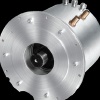Индустриален клъстер "Електромобили" - Учредители:








 |

|

|
| Актуално | За клъстера | Екип | Членове | Документи | Анализи | Услуги | Стани член | Награди | ССЕМ | Контакти |
ИКЕМ - Индустриален клъстер "Електромобили" | Четвъртък, 08.01.2026 | |
|
PLUGGED-IN FLEETS - guide to deploying electric vehicles in fleets
The analysis in this report demonstrates that in the right circumstances EVs can provide a clear benefit for business now. If the ‘sweet spots’ are carefully identified, financial benefits and early commercial advantage will flow.
Electric vehicles (EVs) are rapidly emerging as a viable alternative to conventionally fuelled vehicles. EVs from major manufacturers are already available with an increasing range of makes and models due to appear.
More than half of all new cars in the UK are bought by fleets. If the purchase of EVs starts to make sense for fleets, it will rapidly accelerate their deployment to consumers across the UK too. And for many it makes sense already. This report will help fleets to determine if EVs will provide clear financial benefits and early commercial advantage for them. In order to develop a business case for deploying EVs, it is first necessary to understand the range of operations within the fleet. Undertaking such an analysis will allow fleets to clearly identify the optimal operating environment for an EV. The cost structures of internal combustion engine (ICE) vehicles and EVs are very different. The only realistic way to compare these vehicles is to look at whole life costs. This is vital, as most EVs on the market cannot currently compete with the purchase price and range of conventional fossil fuel vehicles. They can, however, offer other key advantages; there is a significant drop in running costs, noise and tailpipe emissions when EVs are deployed in the right places. For example, it can cost a quarter of the price to refuel an EV compared to a conventional vehicle at today’s prices. Over its lifetime, the whole life cost (WLC) of an EV can be less than a conventional vehicle if deployed correctly.
A whole life costing approach is required to take into account a large number of variables beyond simply the purchase price of a vehicle, including some costs that will alter over time. Vehicle taxes, subsidies, fuel and electricity use, battery lifetime, service maintenance and repair (SMR) and length of ownership are the major factors that should be taken into account. |
Продукти 
Комплектна система за задвижване на електромобилиСистемата за електрозадвижване обхваща гама с три основни типоразмера на ел. мощност със съответните компоненти - електромотор и контролер. oще ...Виж всички продуктиАнкета с продължение...
|
|
|
 ЕВРОПЕЙСКИ СЪЮЗ Европейски фонд за регионално развитие Инвестираме във вашето бъдеще |
 |
 ОПЕРАТИВНА ПРОГРАМА „Развитие на конкурентоспособността на българската икономика” 2007-2013 www.opcompetitiveness.bg |
|
Интернет страницата е създадена с финансовата подкрепа на ЕФРР, в рамките на проект „Развитие на Индустриален Клъстер Електромобили” по ДБФП К-02-2/28.09.2011 г. |
|||